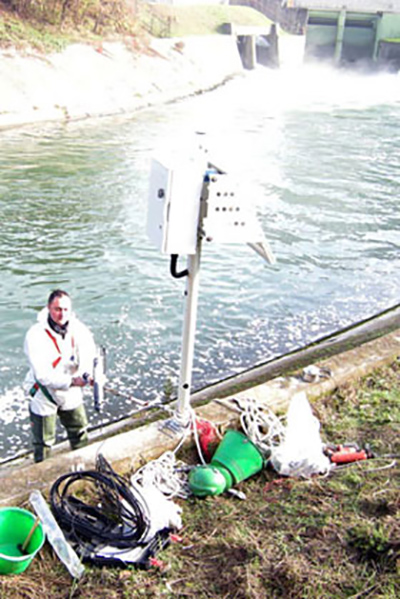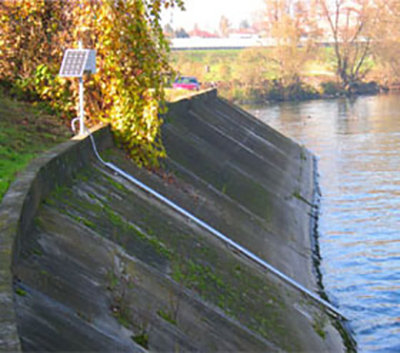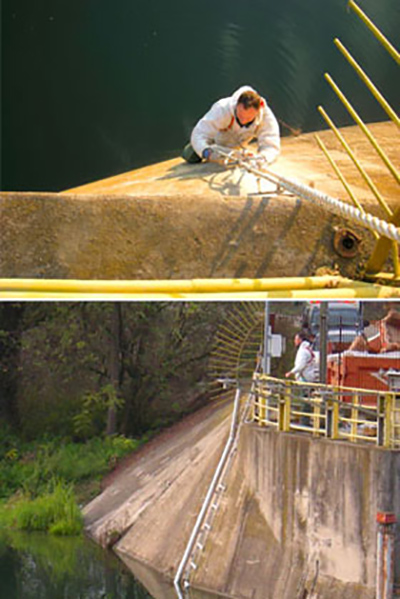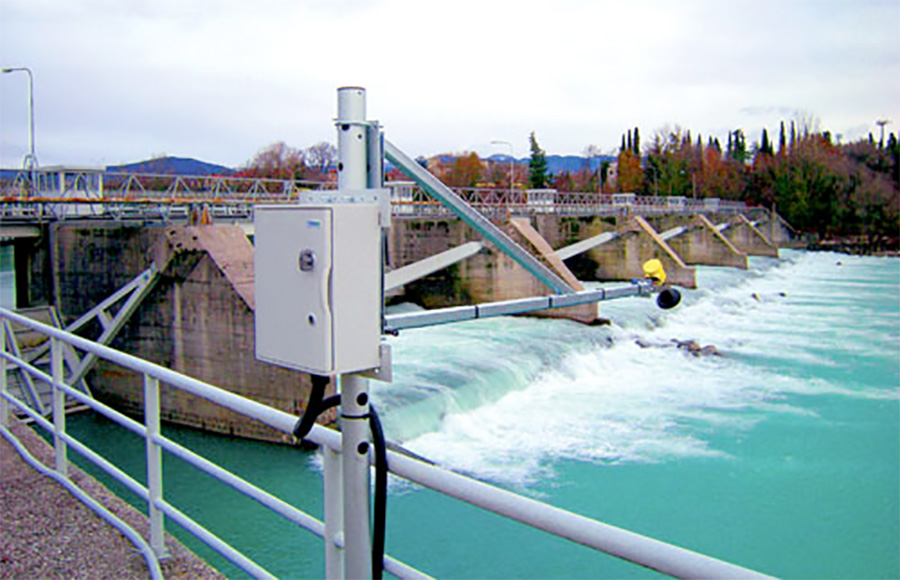
A waters monitoring system, both surface, see the pictures, or ground, consists of installing one or more stations on remote-measurement that, connected to some specific sensors placed into the water, detect specific chemical-physical parameters that provide a health status of analyzed water.
The typically used sensors are multiparametric probes from four to seven parameters (WMP4, WMP7), that basically detect:
- Temperature
- Ph
- Redox
- Dissolved oxygen (polarographic or optical)
- Conductivity
- Level
to which you can add other measurements such as specific ions, or chlorophyll etc. You can also perform other type of analysis, such as the presence of nitrates or phosphates, if we are talking about specific substances analyzers, and the stations will take on a laboratory conformation (cabin for analysis type BoxSta) that needs a fairly constant and continuous maintenance and power supply because water must be brought inside the cabin to be analyzed.
For measuring only the waters quality, is enough to use multiparametric probes (WMP series) properly chosen. Connecting them to a TMF datalogger you obtain an automatic acquisition station that can detect and transmit all the measurements detected with programmable frequency (for example every 15-30 minutes). In terms of local station it is possible, in addition to the acquisition, to manage alarms that the station will autonomously send to predestined recipients.
Alternatively the station can autonomously activate, or adjust, locks or other control systems in order to prevent any transfer of pollution spills. The use of multiparametric probes also allows to keep consumption in order to make a fully self station which will be supplied by a small photovoltaic panel 20-40W.


The use of multiparametric probe is not only an effective method for monitoring the waters quality, but also favorable and easy to set up. As you can see in the picture, each station has a minimal impact, it doesn’t need either primary power supply or particular civil works. The probe is typically lowered on the riverbed or in the aquifer through special protection tubes made of stainless steel or inert material, which does not alter the water parameters near the measuring point. Inside these tubes is downed the probe every time it need to be taken and then put back into the water, for example for maintenance. The choice of the location for installing does not require special care, except for orienting the solar panel, for power supply, toward South. It may require special care for laying the tubes. The staff Nesa is perfectly trained for every situation, and before any installation a detailed designed is performed for minimizing the unforeseen events.
The photos on this page: a remote-measurement network composed of four stations for waters monitoring upstream and downstream of a power plant on a tributary of river Po (Italy).

